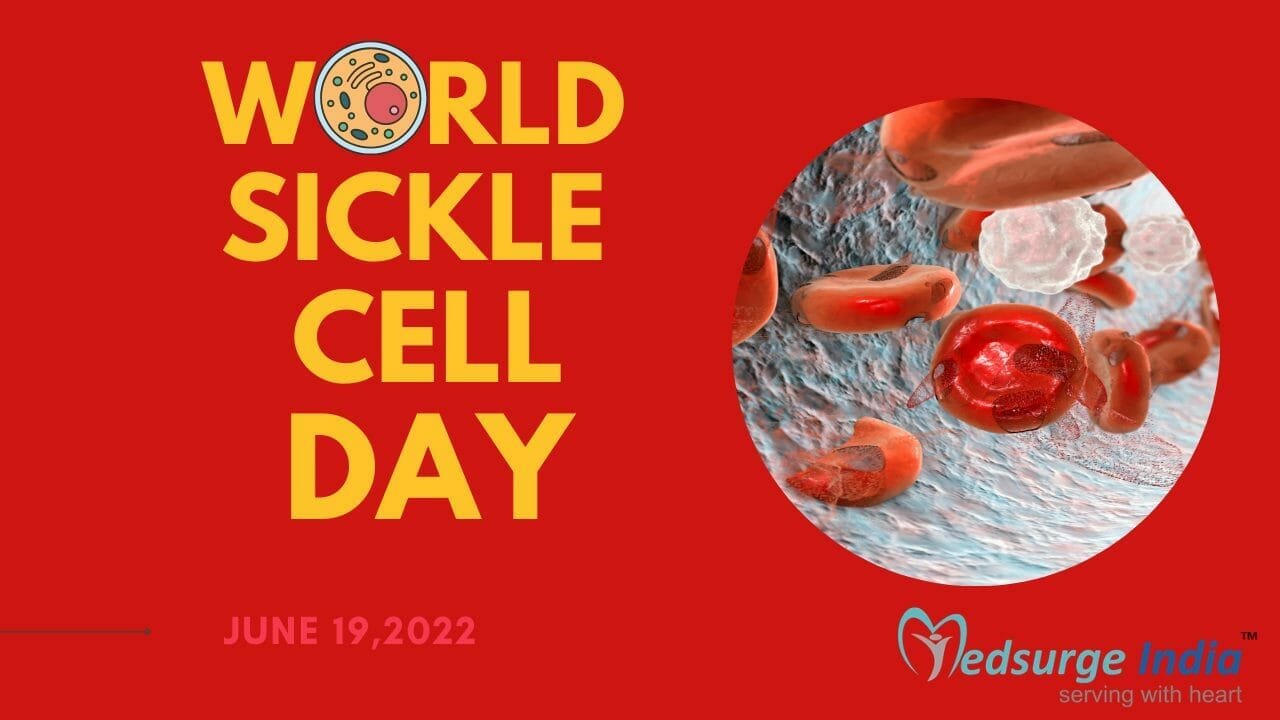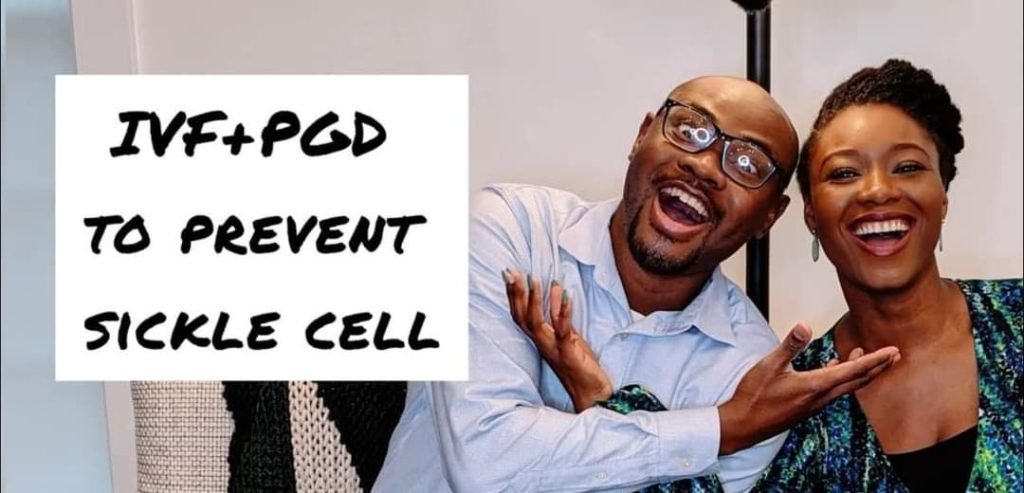
World Sickle Cell Day
The 19th of June has been officially declared “World Sickle Cell Awareness Day”. The purpose of the annual international day is to improve public awareness and understanding of sickle cell disease, as well as the obstacles faced by patients, their families, and caretakers.
It is a form of blood disorder that is passed down from parents to their children. Patients with sickle cell disease develop sickle-shaped red blood cells, which can stick together and prevent blood and oxygen from reaching all parts of the body.
About Sickle Cell Disease
Sickle cell disease (SCD) is a set of red blood cell disorders that are hereditary. Hemoglobin, a protein that transports oxygen, is found in red blood cells. Red blood cells are spherical and flow through small blood channels to transport oxygen to all parts of the body in a healthy state. Hemoglobin is abnormal in people with Sickle Cell Disease, causing red blood cells to become hard and sticky, resembling a C-shaped farm tool called a “sickle.”
The disease’s symptoms usually begin around the age of five months and tend to change over time. Despite the fact that symptoms vary from person to person and fluctuate over time. Anemia, swelling in the hands and feet, vision problems, severe pain, growth abnormalities, and recurrent infections are all common symptoms of Sickle Cell Disease.
When health concerns, such as pain crises, cannot be managed at home, children and adults with SCD frequently require treatment in the emergency department of a hospital or clinic.
The disorder can be detected during the screening process of a newborn. Sickle Cell disease can potentially be identified during pregnancy if there is a family history of the condition. Stem cell transplantation or bone marrow transplantation are the only treatments for this condition. If it is detected early on, immediate therapy can help in the management of the symptoms. Apart from stem cell transplants, antibiotics, pain relievers, periodic blood transfusions, and vaccinations are all possibilities for treating the symptoms.
How Diagnosis is done?
The diagnosis of sickle cell disease usually involves a blood test that is analyzed for defective genes or hemoglobin cells. There are also several screening programs to promote an early diagnosis of the disease, including prenatal and antenatal screening.
- Complete Blood Count Test: For individuals with SCD, it is usually done at every doctor’s appointment. It provides information on all three types of blood cells: red blood cells, platelets, and white blood cells to doctors. SCD primarily affects red blood cells, although it can also impact platelets and white blood cells in rare cases.
- HPLC Test: Examining the blood with a procedure called high-performance liquid chromatography is the best way to check for sickle cell trait or disease (HPLC). This test determines which hemoglobin type is present. A genetic test may be used to confirm the HPLC results.
Because children with SCD have a higher risk of infection and other health concerns, it’s critical to get them diagnosed and treated as soon as possible.
Talk to your doctor to find out how to get tested and to explain the results after testing.
Prognosis of Sickle Cell Anemia
PREVENTION IS THE BEST CURE!
BREAK THE SICKLE CELL CYCLE – Seeing a genetic counselor before trying to conceive might help you understand your risk of having a child with sickle cell anemia if you carry the sickle cell trait. A genetic counselor can also discuss treatment options, preventative measures, and reproductive alternatives with you.
Prenatal Screening: Before your baby is born, healthcare providers can identify sickle cell anemia. They accomplish this by obtaining a sample of the biological mother’s amniotic fluid or tissue from the placenta. The samples are then examined for traces of the sickle hemoglobin gene, which causes the disease. NOW it’s possible to TEST FOR THE #GENES BABY has inherited from parents before giving birth. There are three ways to determine if your unborn child has sickle cell disease:
- Chorionic Villus Sampling (CVS): In 10-12 weeks of pregnancy, the Doctor extracts a small sample of the placenta for DNA testing.
- Amniocentesis: Between weeks 16 and 20 weeks, a sample of the amniotic fluid around your baby is examined via amniocentesis.
- Fetal blood sampling: Specialized doctors can also collect blood samples from the umbilical cord later in the pregnancy for testing.
Finding out a baby has sickle cell disease can come as a shock. You may feel frightened and that you don’t know what to expect. You may feel responsible for your baby’s condition, too, but neither mother nor father is to blame.
The procedure has been simplified by both obstetric and laboratory techniques and can be carried out with safety in many countries, early enough to allow elective termination of pregnancy.
What about future pregnancies?
If a couple does decide to terminate their pregnancy after either amniocentesis or a CVS test, this should not affect their fertility in future pregnancies. The couple may well wish to be referred to their genetic clinic to discuss the risk of an affected baby next time.
PGD IVF: When both parents are aware that they are sickle cell disease carriers and do not want to have a sickle cell disease child, they can use pre-implantation genetic diagnosis (PIGD) to influence the fertilization process. During in vitro fertilization (IVF), a process called preimplantation genetic diagnosis (PGD) is used to comprehensively evaluate embryos with the goal of selecting disease-free embryos for transfer.
In this procedure, eggs are removed from a woman’s ovaries and fertilized in a laboratory setting, similar to in vitro fertilization (IVF). Only if the findings of the sickle cell anemia test are negative can the embryo be put into the woman’s womb.
If you have the sickle cell trait and are considering PGD IVF, the medsurgeIndia team is available to help you.
How do Healthcare Providers Treat Sickle Cell Disease?
Management by Medication – Blood transfusions, antibiotics to cure infections, and medicines to relieve symptoms caused by sickle cell anemia complications are common treatments for sickle cell anemia. Hydroxyurea, voxlelotor, L-glutamine therapy, and crizanlizumab are examples of these drugs.
- Hydroxyurea: Hydroxyurea is a cancer-fighting medication that is now being utilized to treat sickle cell anemia. The US Food and Drug Administration (FDA) approved hydroxyurea as a treatment for sickle cell anemia in children and adults aged 2 and above in 2017.
- Voxlelotor: This medicine inhibits forming of sickled cells in red blood cells with defective hemoglobin. Some red blood cells may be protected by Voxelotor from being damaged quicker than your bone marrow can replace them. The FDA authorized voxelotor as a therapy for children aged 4 and up in late 2021.
- L-Glutamine Therapy: L-glutamine aids in the reduction of several problems associated with sickle cell anemia. Over time, sickle cells form. L-glutamine helps in the prevention of sickled cells becoming more deformed. This therapy was approved by the FDA in 2017 for the treatment of children and adults aged 5 and up.
- Crizanlizumab: People with sickle cell anemia deal with acute pain crises, which are sudden bursts of terrible pain. Crizanlizumab was approved by the FDA in 2019 for adults aged 16 and up. This medicine may assist to reduce the frequency of acute pain crises.
Bone Marrow Transplantation
The only treatment now available to cure the condition is a bone marrow transplant (BMT), which involves replacing the stem (precursor) cells that give rise to red blood cells. At the time of birth, stem cells can be extracted from a donor’s bone marrow (the location within the bones where stem cells are formed), peripheral blood (blood in the veins), or umbilical cord (the cord that distributes oxygen and nutrients from a mother to her infant).
Who can be a bone marrow donor?
Donors are divided into three categories:
- Fully Matched: A sibling with the same bone marrow type as you, who does not have sickle cell disease. HLA typing test is used to match brothers and sisters from the same parents.
- Unrelated Matching: Volunteers who have the same type of bone marrow as the patient. Unrelated donors are identified through national or international organizations.
- Haploidentical: Family members who are just half-matched (usually a mother or father).
As suggested by the healthcare providers, make sure you receive regular medical care, adopt a healthy lifestyle, stay as healthy as possible and avoid situations that could trigger a pain crisis.
New treatments, however, are improving life expectancy and quality of life for those with sickle cell anemia. About 50 years ago, about 15% of children born with sickle cell anemia died before reaching the age of two, and many more perished as teenagers.
However, Sickle cell anemia worsens over time, but treatments can prevent complications and lengthen the lives of those with the condition. While some people can go years without showing any signs, others may not make it past infancy or early childhood.
Plan Bone Marrow Transplant for your loved one who is suffering from Sickle Cell Anemia and give them a new healthier and happier life ahead!
Contact medsurgeIndia team experts to plan BMT of our loved one, we will guide you at every step and plan your trip to India with ease.












